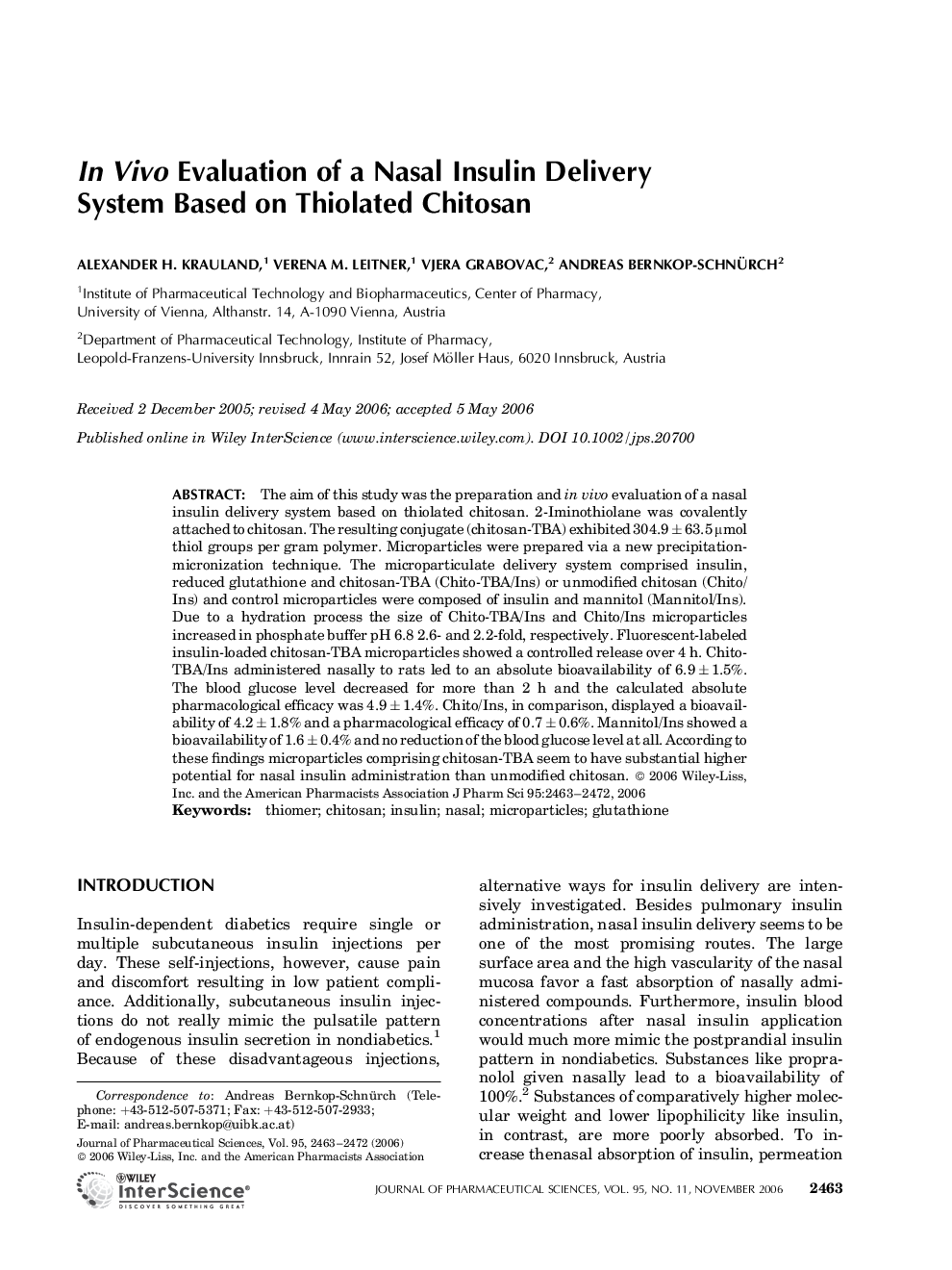| Article ID | Journal | Published Year | Pages | File Type |
|---|---|---|---|---|
| 2487804 | Journal of Pharmaceutical Sciences | 2006 | 10 Pages |
Abstract
The aim of this study was the preparation and in vivo evaluation of a nasal insulin delivery system based on thiolated chitosan. 2-Iminothiolane was covalently attached to chitosan. The resulting conjugate (chitosan-TBA) exhibited 304.9â±â63.5 µmol thiol groups per gram polymer. Microparticles were prepared via a new precipitation-micronization technique. The microparticulate delivery system comprised insulin, reduced glutathione and chitosan-TBA (Chito-TBA/Ins) or unmodified chitosan (Chito/Ins) and control microparticles were composed of insulin and mannitol (Mannitol/Ins). Due to a hydration process the size of Chito-TBA/Ins and Chito/Ins microparticles increased in phosphate buffer pH 6.8 2.6- and 2.2-fold, respectively. Fluorescent-labeled insulin-loaded chitosan-TBA microparticles showed a controlled release over 4 h. Chito-TBA/Ins administered nasally to rats led to an absolute bioavailability of 6.9â±â1.5%. The blood glucose level decreased for more than 2 h and the calculated absolute pharmacological efficacy was 4.9â±â1.4%. Chito/Ins, in comparison, displayed a bioavailability of 4.2â±â1.8% and a pharmacological efficacy of 0.7â±â0.6%. Mannitol/Ins showed a bioavailability of 1.6â±â0.4% and no reduction of the blood glucose level at all. According to these findings microparticles comprising chitosan-TBA seem to have substantial higher potential for nasal insulin administration than unmodified chitosan.
Related Topics
Health Sciences
Pharmacology, Toxicology and Pharmaceutical Science
Drug Discovery
Authors
Alexander H. Krauland, Verena M. Leitner, Vjera Grabovac, Andreas Bernkop-Schnürch,
